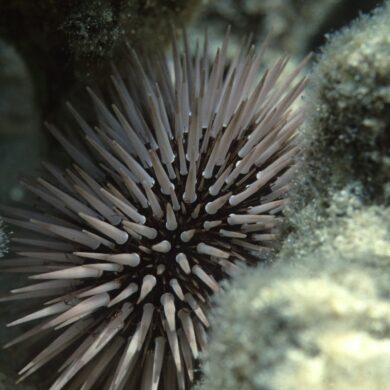The tiniest of flies have helped Dr. Bier and his colleagues to finally elucidate the molecular effects of Cholera toxin on humans.
By Safwan Haque | UTS Features Writer | SQ Online (2013-14)

Among other luxuries, it is easy to take a clean water supply for granted. We drink water without a second thought. But just think if one day you took a sip of water and the next day you had profuse diarrhea and were close to your last breath. Such is the case with people who become infected with cholera.
Cholera outbreaks rarely make headlines in developed countries like the U.S. , but it is one of the biggest killers in developing nations where poor sanitation, crowding, reduced access to clean water supply and famine are all too common.

According to the National Library of Medicine, Cholera is an infection of the small intestine caused by the bacterium Vibrio cholerae. Watery diarrhea and vomiting result from such an infection which can even lead to fatal dehydration. Eating food or water contaminated by the feces of an infected person in a cholera risk zone is the source of infection.
Dr. Ethan Bier of the University of California, San Diego’s (UCSD) Biological Sciences Division and his fellow researchers in Dr. Victor Nizet’s lab at UCSD School of Medicine and from other institutions have investigated the mechanisms of the cholera toxin responsible for cholera’s virulence.

Dr. Bier and Dr. Annabel Guichardin in his lab had previously examined the effects of another set of bacterial toxins, the anthrax toxins, on fruit flies. They observed that fruit flies injected with the toxin had abnormal wing patterns. Another team of scientists led by Professor Victor Nizet found similar toxic effects in human cells and mice in which the toxins disrupted transport of proteins to cell junctions. Some of these proteins, called adhesion molecules, function to hold cells together to create a well sealed vascular system. The disruptive effects of anthrax toxins on the delivery of proteins to cell junctions process might contribute to leaky blood vessels often observed during late stages of anthrax infection. Dr. Bier and Dr. Nizet were then interested to see if there was a generalized mechanism of pathogen (disease causing organism) action for other bacterial pathogens that worked by similar mechanisms (increasing levels of a messenger molecule called cAMP). They noted that cholera toxin produced by Vibrio cholerae acted like one of the anthrax toxins and wondered whether it too might disrupt cell junctions to cause leakage of body fluid into the intestine. The researchers used Drosophila melanogaster (fruit flies) due to the flies’ easy accessibility for lab use, being a “sophisticated system” for analysis of cell interaction and its resemblance to human molecular pathways.
How Cholera Does Damage
The cholera toxin increases the synthesis of cAMP molecules, which are a secondary messenger involved in physiological signalling processes. This activates protein kinase A, and in turn, the Cystic fibrosis transmembrane conductor (cftr). Cftr (a chloride channel) causes an efflux of chloride ions. To maintain charge balance, the same amount of sodium ions and water follow, which causes the watery diarrhea. The sodium and water leave by the paracellular pathway (between two cells.) Dr. Bier and colleagues found that by also disrupting cell junctions, cholera toxin contributes to diarrhea by helping sodium ions and water flow out into the lumen of the gut.
How Understanding Cholera Helps Us
Dr. Bier and his colleagues found that the specific mechanism by which cholera toxin disrupts delivery of proteins to cell junctions is to reduce the levels of a key protein involved in this process called Rab11. Importantly, they also found that increasing levels of Rab11 can actually reverse the effect of the toxin. Dr. Bier thinks this might be the basis for a therapeutic approach in the future.
“In places where cholera is endemic, people may not have access to enough fresh water and even if they do, they cannot drink enough in time to save them because they are so sick,” said Dr Bier. “If they can give them a drug increased in Rab 11 levels, I believe it can help a lot of people.”
This in connection to understanding the exact mechanism of how the toxin effects Rab 11 are the future directions of the research. As the work behind such highly-selective drugs continues, the treatment and outbreaks for those infected with cholera can improve.

References:
Guichard, A., B. Cruz-Moreno, B. Aguilar, J. Kuang, A.A. Kurkciyan, Z. Wang, S. Hang, G.P. Pineton de Chambrun, D.F. McCole, P. Watnick, N.M. van Sorge, V. Nizet, and E. Bier. (2013). Cholera toxin disrupts barrier function by inhibiting exocyst-mediated trafficking of host proteins to intestinal cell junctions. Cell Host & Microbe 14, 294-305.
